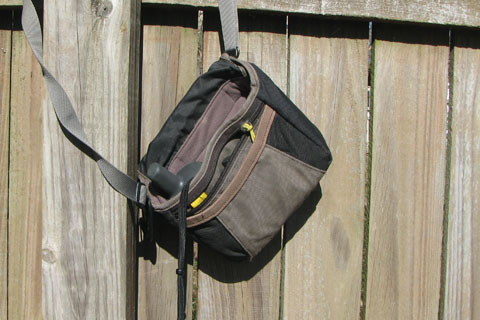| 562 | Trail Sense GPS Settings |
2012-01-23 |

The wonderful world of the GPS is a modern day marvel. The small handheld device is capable of displaying the GPS's location from almost any place on the planet, earth (that is, any place where the GPS can receive the satellite signal). What a revolution to navigation! Gone are the days of plotting with a map and compass. Now, with a GPS, all you have to do is push the "mark" button and the GPS tells you your exact position.
When we first started using the GPS, we were overwhelmed by all the options. The GPS receives the time and position from the satellite and then processes that simple data to provide a wealth of information such as: speed, tides, sunrise, distance, moving speed, time stopped, and even more. We understood the basic navigating operations; but did not know how to adapt the GPS to meet our needs. Simple changes in the settings or preferences made the GPS more accurate and supplied us with the information we needed.
Note: We do not favor one GPS over another. We use a Garmin 62s and 60CSx. Most GPS units offer similar features.
A few GPS setting tips ...
The GPS is powered by batteries. To help keep the world a bit greener, use rechargeable batteries. Change the setting for battery type to rechargeable.
We have found that the Sanyo "eneloop" battery is the best. The difference between the eneloop and the competition is amazing.
To save battery life we adjust the devices lighting. Adjustments include how long it will stay lit and how bright.
The other major battery saver is to turn the compass off. The compass is always working but is very seldom used. Just remember to take a second and turn it on if you need it.
There are all sorts of warning signals on the GPS - they may be turned off saving further battery life; but we leave ours on. If the device needs to warn us, then we want to hear it.
The map settings are very important. Most GPS units have mapping capabilities. The screen usually limits the usefulness of the maps but I still find they are convenient. We generally carry a paper map with us also.
One important adjustment is the map orientation, whether it is "north up" or heads up" (or track up). North up keeps north at the top of the screen. This setting is most similar to using a USGS "topo" maps. We use north up for general travel.
Heads up (or tracks up) changes the view so that what you see is what you get. If you are traveling south, south will be at the top of the screen. If you are following the bread crumb tracks to return on the same track, heads up simplifies the navigation.
You can also turn the tracks off all together but I don't understand why you'd want to. (If you were using the handheld GPS in an automobile, removing the tracks might have some advantages - reducing clutter, etc.)
To record a more accurate track, change the recording interval, but that quickly uses up memory.
The units of measure can be statute, metric, or nautical.
Time can be adjusted to your preferred format.
Your position format may also be changed. The position setting includes whether you prefer the UTM, or some form of degree. I prefer seeing the actual degrees (subdivided by a decimal) of the position, rather than the UTM zones and meter indicators.
Position format also includes the map datum and spheroid used. The spheroid is how the data is projected. WGS 84 is the default. Make sure you know what you are doing if you change these settings (or make sure you know how to reset the device to the factory settings).
The reset function, resets the GPS. We use ours to reset the device's memory and clear the recorded data. Just make sure that you have downloaded any information that you wanted to keep before the reset.
The "reset all" setting, wipes out everything. Don't use it unless you want to return all of your settings to the factory settings.
If you will spend a bit of time working with the GPS settings, you will (eventually) fine tune the information you are collecting into usable data and maximize the performance of your device.
Good luck. If you are confused, try the product's owners manual. Most manuals are available online.
Happy GPS trails
Other navigation topics: Where Am I?, Where Am I Going?, How Do I Get There?, and Basic Map and Compass, Navigation Tips